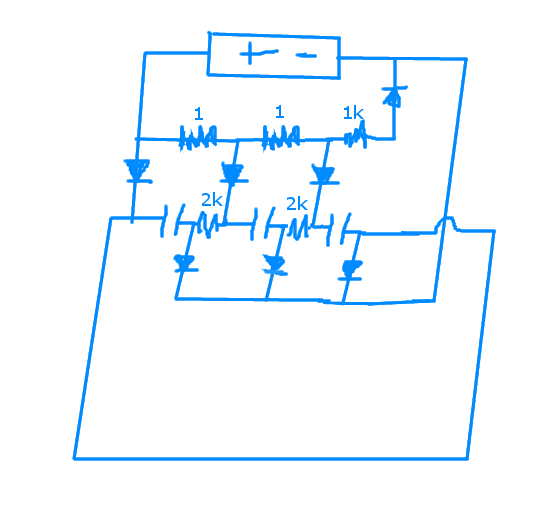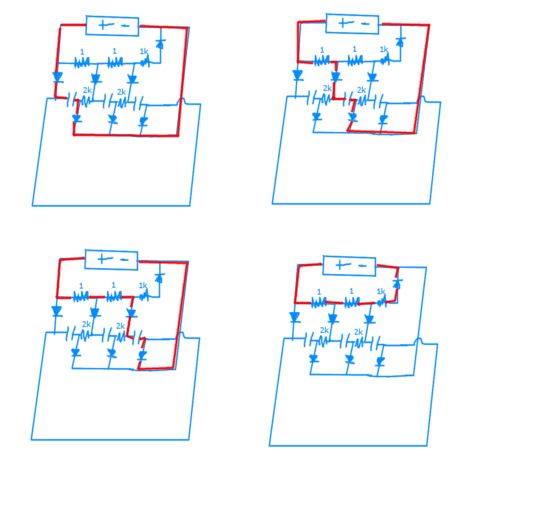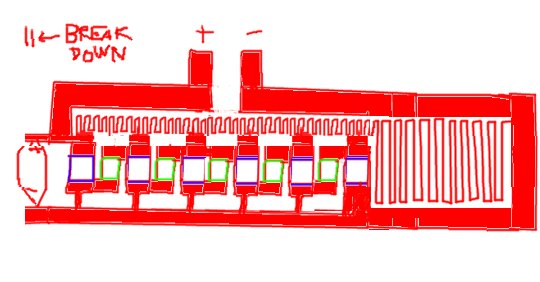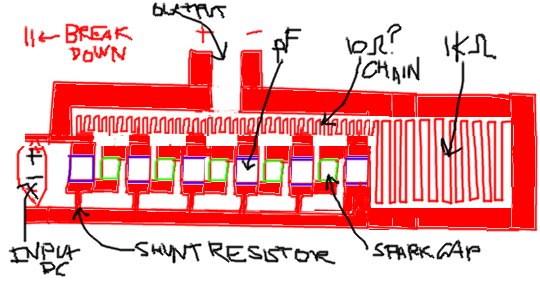I've been working on my own design of voltage doublers/multipliers. The circuit here is a times 2, but you can add more caps to it easy enough for more voltage.

The idea for how it works is the capacitors are charged in sequence by the DC power supply, the first capacitor is shorted to, then once its filled the current diverts to the second capacitor. They must be charged in sequence, or they wont be filled to the top for times 2. If you charge them both at once they only half fill.
The diodes are there to stop the capacitors from discharging, the resistor values are to make sure voltage division doesnt cause too much loss on the collecting voltage.
Then they discharge in series, giving you a similar effect to batteries in series, they add their voltages together.
The circuit is tested and working, except for a strange problem I need help with.
I only get twice the voltage, if I turn the power supply off then test it. I know that I have to wait for both capacitors to be full before I test, this isnt the problem, it seems with the battery connected it only reads the volts of the power supply not the capacitors!
Note: I actually dont remove any leads, just switch the power supply off and bam I get double the volts, but when its on, its only registering the normal voltage, im not sure what it is!
The discharge path is open, and im just measuring both sides with the multimetre, with the megohm impedance or whatever the only thing connecting it.
Its completely tripping me out, not sure what to do.
Heres another version of the circuit, and its just doing the exact same thing.
The blue is the charge. (and unless I remove this charge, I dont get twice the volts on the serial discharge.)
The red is the serial discharge.
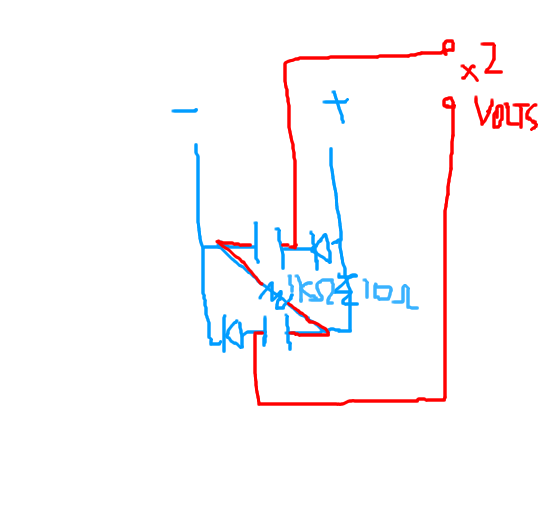

The idea for how it works is the capacitors are charged in sequence by the DC power supply, the first capacitor is shorted to, then once its filled the current diverts to the second capacitor. They must be charged in sequence, or they wont be filled to the top for times 2. If you charge them both at once they only half fill.
The diodes are there to stop the capacitors from discharging, the resistor values are to make sure voltage division doesnt cause too much loss on the collecting voltage.
Then they discharge in series, giving you a similar effect to batteries in series, they add their voltages together.
The circuit is tested and working, except for a strange problem I need help with.
I only get twice the voltage, if I turn the power supply off then test it. I know that I have to wait for both capacitors to be full before I test, this isnt the problem, it seems with the battery connected it only reads the volts of the power supply not the capacitors!
Note: I actually dont remove any leads, just switch the power supply off and bam I get double the volts, but when its on, its only registering the normal voltage, im not sure what it is!
The discharge path is open, and im just measuring both sides with the multimetre, with the megohm impedance or whatever the only thing connecting it.
Its completely tripping me out, not sure what to do.
Heres another version of the circuit, and its just doing the exact same thing.
The blue is the charge. (and unless I remove this charge, I dont get twice the volts on the serial discharge.)
The red is the serial discharge.

Last edited:
